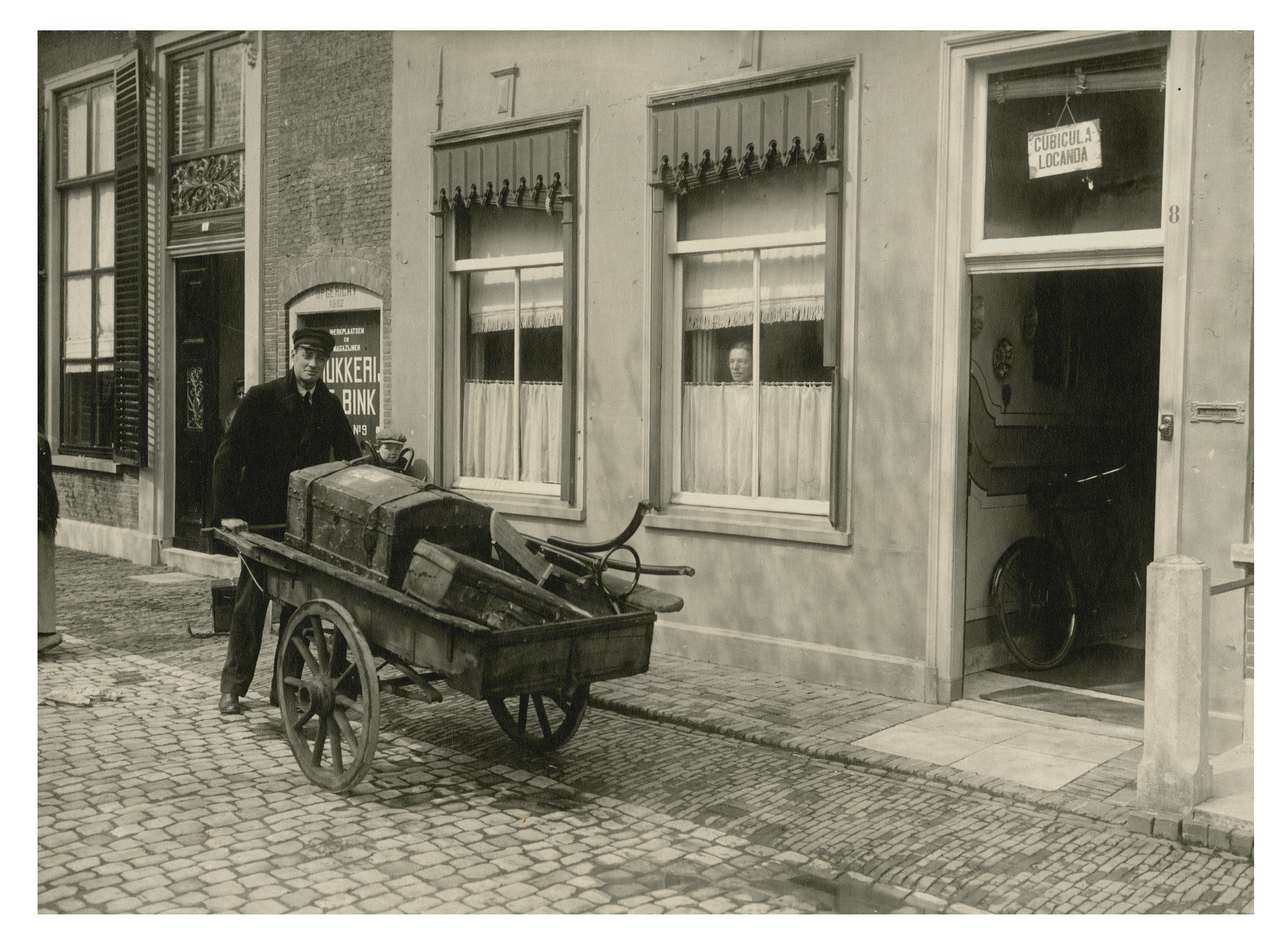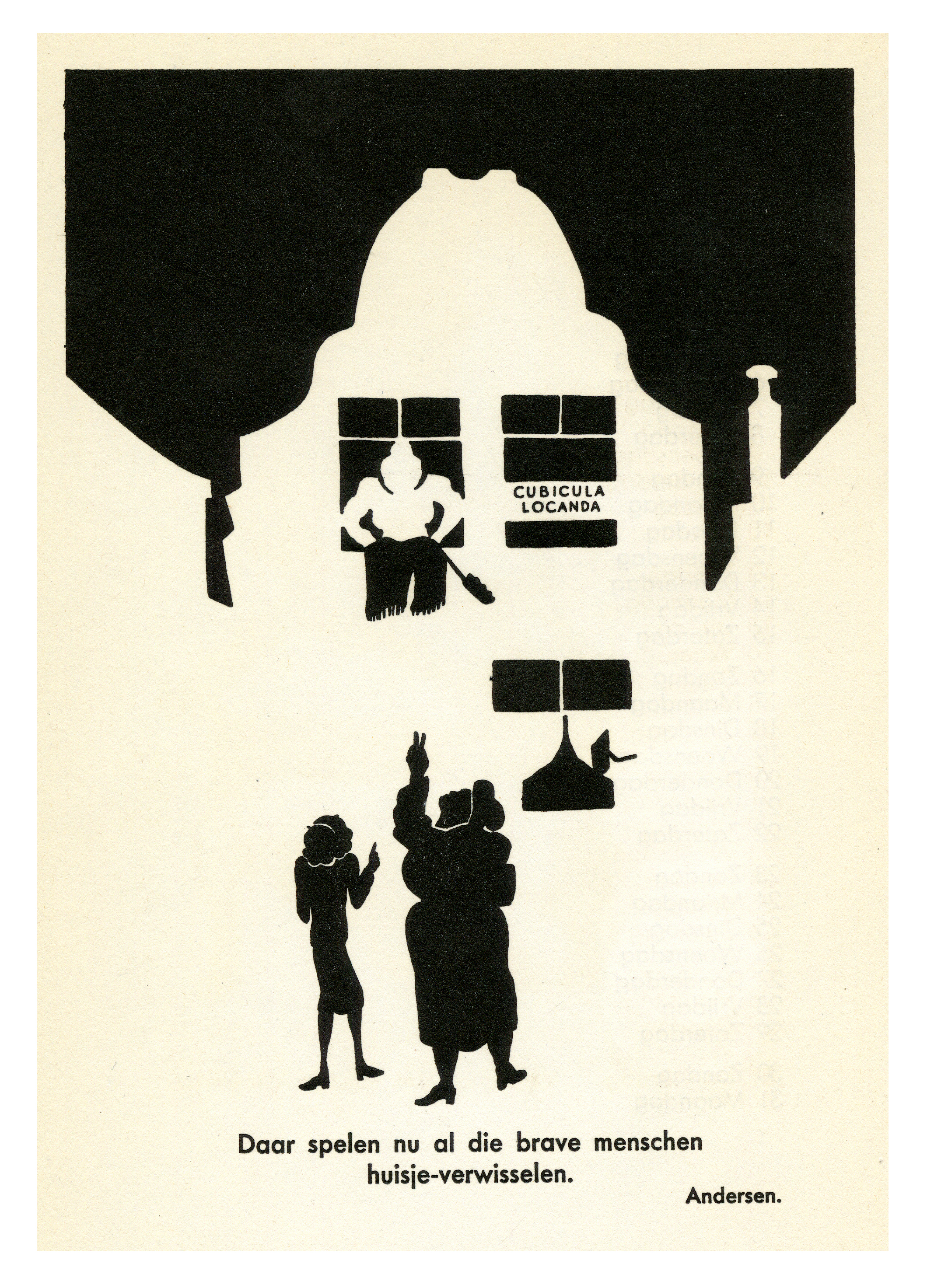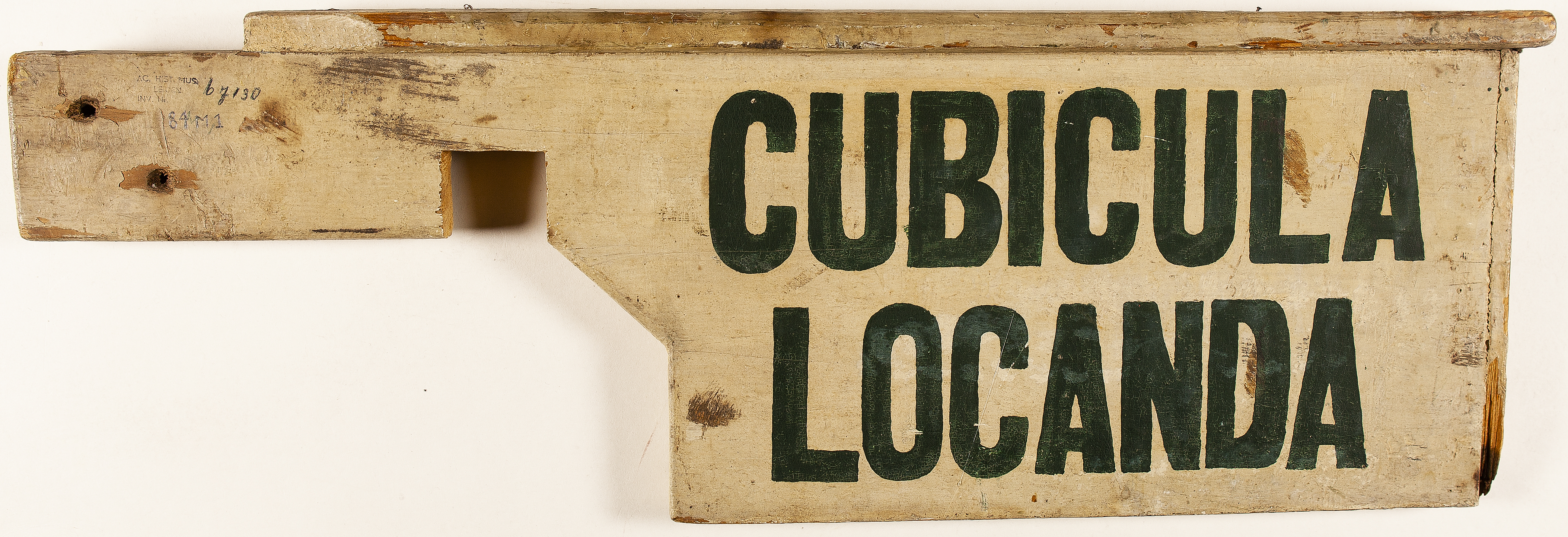Cubicula locanda
The signs to rent a room have disappeared from the Leiden streets a few decades ago, but plenty of traces can still be found throughout the Academic Historical Museum: Cubicula locanda!
A young doctor wakes up with a bit of a hangover the morning after his PhD-defense. It doesn't take long before he realizes that his days as a student are now truly over. He is literally and figuratively forced to move on to a new life:
Hij zag naar buiten, zijne kamers hingen te huur: cubicula locanda! Hij zuchtte eens diep en staarde weemoedig zijn gezellig kastje nog eens aan van onder tot boven en liep het nog eens op en neder in het breede en in het lange en beschouwden den vriendelijken haard nog eens, om welken hij zoo vele en zalige uren met zijn liefste vrienden in vrolijken kout had gesleten en die nooit weer branden zou voor hem (…).
He looked outside, his rooms were for rent: cubicula locanda! He sighed deeply and stared nostalgically at his cosy little room from bottom to top, walked up and down in the width and in the length and glanced again at the friendly fireplace where he spent so many a blissful hour in cheerful conversation with his dear friends, that would never burn for him again (…).
In Promotie (1841), a sketch by Klikspaan (ps.of J. Kneppelhout), famous for his satire of Dutch student life.

Academic Historical Museum 70 PAL1 95080
There is a photo album in the collections of the Academic Historical Museum (70 PAL1 95080) from the 1910s, created by an unknown Leiden student. This photo is one of the last pictures in that album. ‘Adolf verhuist, juni ‘19’ – Adolf moves house, June '19 – says the caption. Personally, I can’t help to think of the passage from Klikspaan when looking at this photograph. Adolf – or perhaps more likely a hired mover – is standing before Stille Rijn 8 with a handcart, filled with Adolf’s belongings. The move is closely monitored from the front room of Stille Rijn 8 by an onlooker, the landlady, landlord, Adolf himself, or another student. Above the door the sign to attract a new resident has already been put up: Cubicula locanda.

Almanak van de Vereeniging van Vrouwelijke Studenten te Leiden, 1939
Cubicula locanda (rooms for rent) or Cubiculum locandum (room for rent) signs were used specifically to attract student-tenants in the Netherlands and were therefore strongly associated with university cities and student life. In popular (student) culture, the signs, both in image and text, were symbolic of either the start or end of independent student life. So too in the passage by Klikspaan and this illustration from the almanack of the Vereeniging voor Vrouwelijke Studenten te Leiden - Association of Female Students in Leiden – from 1939. For local property owners – the landladies – and lords – the signs would have had, above all, a commercial goal, which is probably why so few were preserved. People just discarded them when the signs went out of fashion. Fortunately, a few copies of the signs have survived the test of time. Two can be found in the Academic Historical Museum (84 M1 67130 and 84 M2 05137) and a third one from Leiden is part of Museum De Lakenhal's collections.

Academic Historical Museum 84 M1 67130
During Klikspaan's lifetime, Cubicula Locanda signs seem to have been quite a common presence in Dutch university cities. With the decline of Latin as the academic language of choice in the nineteenth century and the rising popularity of larger student houses (often without a landlady or –lord) in the twentieth century, the characteristic text slowly disappeared from Dutch city streets. As early as 1899, a student from Groningen wrote about ‘the antique cubiculum locandum’ as ‘the old way of renting out rooms [which] completely went out of fashion.’ Leiden, however, a bastion of tradition, was an evident exception to this trend. The Cubicula Locanda signs could be found in the Leiden city centre until the mid-1960s.
Author: Erik-Jan Dros works at the Academic Historical Museum and at the Leiden University Library Special Collections.


